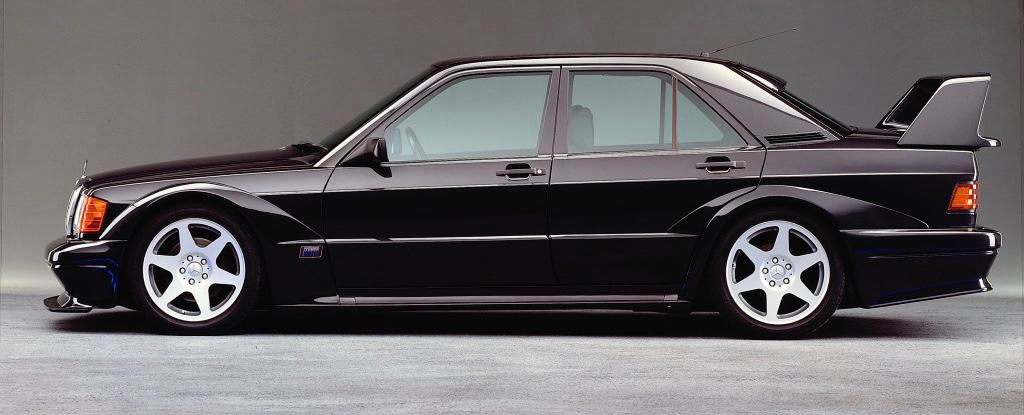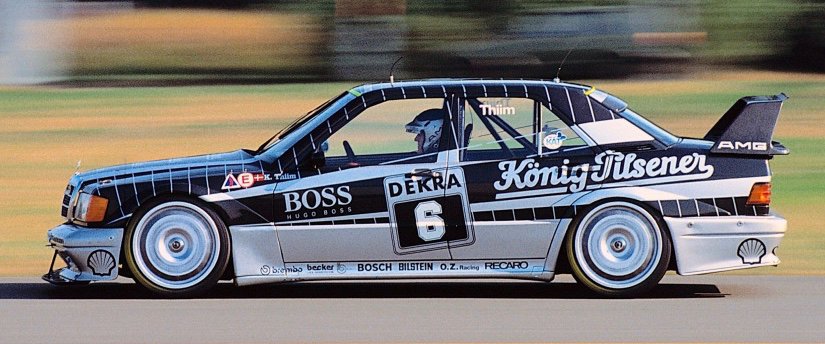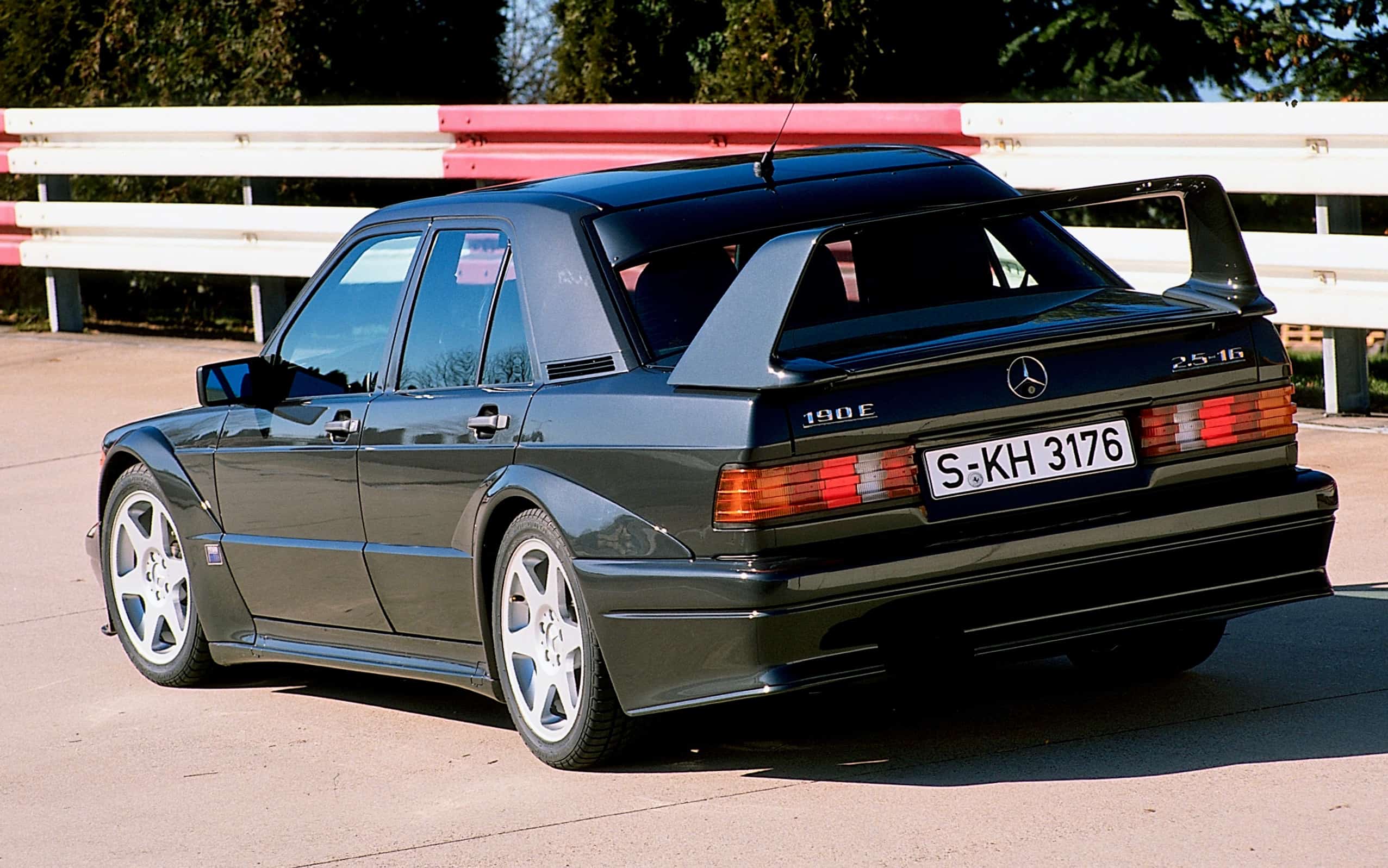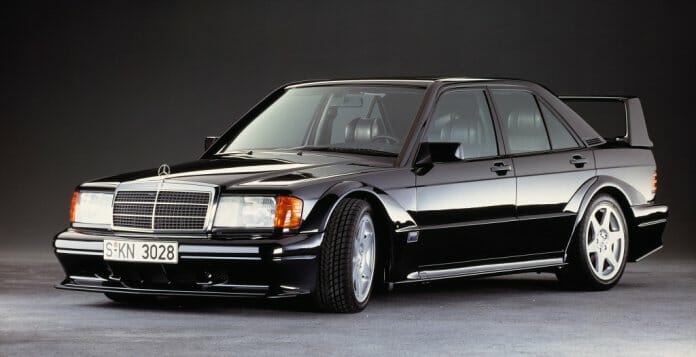A news release from Daimler AG notes that the Mercedes-Benz 190 E 2.5-16 Evolution II, a car that is compact in size but with a name that was anything but tiny or tidy, made its debut 30 years ago at the 1990 Geneva Motor Show. The reelease adds that 502 such cars were produced as homologation specials so Mercedes could enter the Evo in the German Touring Car Championship racing series.
Although the term “future classic” had not been coined at the time, the Evos certainly fit that phrase, although it has taken nearly all of those 30 years for the cars to make their way onto collector car auction blocks and even onto the show field at some concours d’elegance.
Though any Mercedes was very much part of the luxury car class in the American automotive marketplace, in Germany, the standard 190 E was ordinary to the point of being popularly used as taxis. But wow, after racing-bred modifications, could these taxis deliver.


In Evo II homologation guise, the cars still had 4-cylinder engines, though their 2.5 liters pumped out 235 horsepower at 7,700 rpm (the DTM racing cars benefited from 373 horsepower, and they won 16 of the 24 races in which they were entered). The homologation cars had 5-speed manual transmissions, revised suspension, and carried large, racing-style and box-shaped rear wings for aerodynamic downforce.
I got to experience first-hand the transformation from taxi to track monster one day at the Hockenheim racing circuit south of Frankfurt.
The track dates to 1932, and its layout went through various iterations. When I was there in the early 1990s, it included a stadium section as well as part of the older circuit that went out into a forest and back. Total length was nearly 5 miles.
The stadium was technical with challenging turns, the forest section was fast, long straightaways interrupted briefly by chicanes to keep things sane.
I was in Germany on a Mercedes press event that included track time in Evos. My recollection is that we drove to the track in the morning, probably did some lead-follow laps to learn our way around, and then pretty much had the place to ourselves for the day. My recollection also is that it not so much rained as sprinkled significantly, and that most of my American automotive journalist colleagues decided to drive back to the headquarters hotel, leaving just a couple of us at the track.

I also remember wondering why anyone would abandon such a track when it was ours well into the afternoon. Besides, there was that sequence of turns in the stadium section that I was determined to drive until I felt I’d finally done them properly.
It took quite a few laps — stadium turns, then out through the forest and then back again, and again, and… but I wasn’t counting, just driving, and smiling, and I left the track satisfied with my driving, and astounded by what the Evo could do even in the hands of a driver rather than a racer.
The car and the track became favorites. Decades later, the memories still make me smile with delight.





